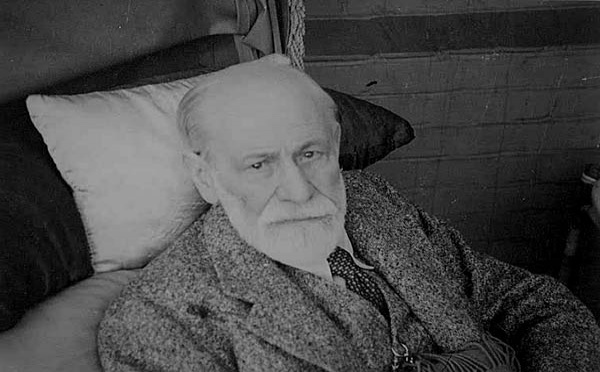Who We Are
Based in Washington, DC, the American Psychological Association (APA) is a scientific and professional organization that represents psychology in the United States. With 150,000 members, APA is the largest association of psychologists worldwide.
Mission Statement
APA Bylaws I.1
The objects of the American Psychological Association shall be to advance psychology as a science and profession and as a means of promoting health, education, and human welfare by
the encouragement of psychology in all its branches in the broadest and most liberal manner
the promotion of research in psychology and the improvement of research methods and conditions
the improvement of the qualifications and usefulness of psychologists through high standards of ethics, conduct, education, and achievement
the establishment and maintenance of the highest standards of professional ethics and conduct of the members of the Association
the increase and diffusion of psychological knowledge through meetings, professional contacts, reports, papers, discussions, and publications
thereby to advance scientific interests and inquiry, and the application of research findings to the promotion of health, education, and the public welfare.
Annual Report
2005 Annual Report
Definition of "psychologist"
APA policy on the use of the title "psychologist" is contained in the General Guidelines for Providers of Psychological Services, which define the term "Professional Psychologist" as follows: "Psychologists have a doctoral degree in psychology from an organized, sequential program in a regionally accredited university or professional school." APA is not responsible for the specific title or wording of any particular position opening, but it is general pattern to refer to master's-level positions as counselors, specialists, clinicians, and so forth (rather than as "psychologists"). In addition, it is general practice to refer to APA accredited programs as "APA-accredited" rather than "APA approved." The position as described must be in conformity with the statute regulating the use of the title psychologist and the practice of psychology in the state in which the job is available.
Definition of "psychology"
Psychology is the study of the mind and behavior. The discipline embraces all aspects of the human experience — from the functions of the brain to the actions of nations, from child development to care for the aged. In every conceivable setting from scientific research centers to mental health care services, "the understanding of behavior" is the enterprise of psychologists.
APA's Professional Divisions
There are 53 professional divisions in the APA. Go to http://www.apa.org/about/division.html for a complete list. This site also contains a list of the divisions organized by topic area.
APA President
Sharon Stephens Brehm, PhD is the 2007 President of the American Psychological Association.
Brehm is professor of psychology in the clinical and social programs at Indiana University Bloomington. Trained as a clinical psychologist, Dr. Brehm specialized in child clinical psychology, focused increasingly on social psychology, advocated the integration of clinical and social psychology, and encouraged a stronger dialogue between developmental and social psychology.
Her service to psychology includes chairing the Discipline Screening Committee for Fulbright Awards in Psychology and membership on numerous journal editorial boards and the National Institute of Mental Health Mental Health Small Grant Review Committee. In APA, she served two terms on the Council of Representatives and two terms on the Finance Committee.
For more information, go to www.apa.org/about/president/.
Contact Us
The contact information for APA's main building is below. For contact information for individual departments and programs, please visit http://www.apa.org/about/contact.html.
APA's Organizational and Governance Structure
Like the federal government, APA's governance has a complex system of checks and balances that help make the system operate fairly and democratically. Because of its complexity, many members are not aware of how the parts of the structure operate together and exercise control over each other.
First of all, APA is a corporation chartered in the District of Columbia. Our certificate of incorporation determines and limits the kind of organization we can be and what we can do. Fortunately, the limits are broad, but the charter takes precedence over all of our internal documents, even our bylaws. Because of the nature of our organization, we are given favorable tax treatment by the federal government and by the District. But that, too, limits our activities. If we should deviate too far from our primary role of promoting psychology in the public interest, we could lose our favorable tax status and that would make it far more expensive, if not impossible, to operate at our current level of services and activities.
Our constitution, the APA Bylaws, take precedence over all other internal rules. They can only be amended by vote of the membership. They have remained fundamentally unchanged since they were ratified by the members a half-century ago. The bylaws establish the major structural units of APA: the Council of Representatives, the Board of Directors, the officers, the standing boards and committees, and the central office with a chief staff officer, now called the Chief Executive Officer.
As in all democratic systems, the ultimate power is in the hands of the voters, in this case, the members of APA. The members of APA exercise their power through direct vote and through the election of members to serve on the Council of Representatives. The primary constituencies from which the representatives are elected are the divisions, which are an integral part of the Association, and the state and provincial psychological associations, which are affiliates. The number of representatives to which each is entitled is determined by an apportionment ballot in which members allocate votes among the constituencies according to their own priorities.
The Council of Representatives has broad authority to develop the internal and external policies of the Association, within the framework of the charter and the bylaws. It has full authority over the affairs and funds of the Association. The Council elects almost all elected positions: the Board of Directors, the treasurer, the recording secretary and the chief staff officer. But the president, who is directly elected by the entire membership, chairs both the Council and the Board of Directors.
The Council elects six of it members to serve, along with the elected officers (president, past-president, president-elect, treasurer, recording secretary and chief executive officer), as a 12-person Board of Directors to manage the affairs of the Association, subject to the periodic approval of the Council. In its corporate role, the Board oversees the business of the Association much like the board of any corporation. The Board has responsibility for the disbursement of funds. With the advice and assistance of the Finance Committee, which is elected by Council and reports to it through the Board, the Board presents an annual budget for the approval of Council and monitors any deviations from the budget during the year. The Board acts for Council between its meetings and monitors any deviations from the budget during the year.
Much of the work of the Association is done on a volunteer basis by the members of the boards and committees. The committees carry out a wide variety of tasks as indicated by some of their titles: ethics, membership, accreditation, etc. Some boards and committees have specific responsibility for monitoring major programs such as the directorates, the journals and international affairs. In the course of their work, committees often generate proposals for new policy or new activities by the Association. Ordinarily, these proposals are submitted for review by the Board of Directors and referred by the Board to the Council for final determination. All items with fiscal implications are also subject to review by the Finance Committee.
The chief executive officer, as the administrative officer of the Association, is responsible for the management and staffing of the Central Office and for running the business aspects of APA. With nearly 500 employees, the Central Office provides staff for all of the boards and committees, runs one of the largest scientific publishing houses in the world, invests in stocks, manages real estate and interacts with private, state and federal agencies and organizations. In addition to collecting roughly $16.5 million in member dues and fees each year and $41 million from the Communications Programs, the Central Office generates additional income of almost 15 million to expand the activities and services of APA. Actual dues represent only 16% of the revenues needed to run APA.
The relationship of the chief executive officer (or CEO) to the Board of Directors is a particularly important one, since both have major responsibilities for keeping the Association operating smoothly. According to the Board of Directors' handbook, the Board "refrains from interfacing with the CEO's management prerogatives, while the CEO defers to the Board in all policy matters." The Board generates policy and recommends it to the Council. The chief executive officer is responsible for implementing the policy decisions. This arrangement frees the Board from day-to-day personnel and management decisions and gives the CEO broad responsibility for operating APA according to the mandate of the members, the Council and the Board.
Although subject, as are all human systems, to occasional malfunctions, our system of checks and balances has worked pretty well over the course of almost 50 years. The ultimate power resides, as it should, in the membership, and there are numerous levels of checks and balances to assure that power is exercised responsibly. Winston Churchill, among others, has been quoted as saying that democracy is a terrible system of government unless you compare it with all of the others. Our system may not be the simplest way of doing business, but it assures a high level of fairness and shared responsibility.
APA's Board Strives to Meet Membership's Diverse Needs
The APA Board of Directors is authorized by the bylaws to "exercise general supervision over the affairs of the Association." In carrying out this rather large mandate, the Board plays such a unique and central role in the functioning of the Association.
The Council of Representatives, whose members represent divisions and states, is a large body that meets only twice a year. According to the bylaws, the Board serves as the "administrative agent" of the Council. The Board might also be referred to as the Council's executive committee of management. Six of the Board members are the officers: the president, president-elect, past-president, recording secretary, treasurer and the chief executive officer, who serves without vote. The other six are members-at-large. Council elects all but the three presidents, who are elected by the entire membership, from its 168* members. An additional member of the Board is the chair of the American Psychological Association of Graduate Students (APAGS) Committee, who serves without vote.
Managing the affairs of a multimillion dollar corporation that is also a complex membership organization requires the Board to make many decisions, but because the bylaws give the Council final authority over the policies and finances of the Association, most of these decisions require Council approval. The ability of the Board to exercise its administrative and supervisory responsibility thus rests not on the inherent power of the Board but on its effectiveness in understanding the needs of the Association, determining how those needs might best be met and making decisions and recommendations acceptable to the Council and the membership.
How does the Board achieve these objectives? Understanding the needs of the Association requires every Board member to review an enormous amount of information. As the body to which virtually all governance groups, such as boards, committees and task forces report, the Board receives, synthesizes and mediates all the information and recommendations of those groups, frequently referring the recommendation of one group to another for comments. Each Board member takes particular responsibility for several of these groups and attends their meetings as a liaison of the Board.
The Board also receives the chief executive officer's reports on Central Office operations and hears directly from many of the senior staff members. In addition, all Board members have large networks including divisions, state associations, Council representatives and individual members with whom they regularly communicate in order to reflect the view of various constituencies of the Association.
Determining how the needs of the Association may best be met requires the Board to understand and balance the recommendations of all of the constituent groups in the context of the information they have received and the resources of the Association. Debates within the Board often consist of Board members forcefully presenting the divergent views and proposals of the various views. The Board then tries to craft its recommendations to Council in a way that respects the diversity of views, the existing policies of the Association, the bylaws and the available resources. Despite their diversity, or perhaps because of it, the members of the Board work long and hard to find solutions that are good for the whole Association.
APA's Council: Most Important Governance Body of the Association
The Council of Representatives is APA's major legislative and policy setting body.
The Council of Representatives meets twice each year: at the end of February and at the time of the annual convention. Representatives are elected by the divisions and by the State and Provincial Psychological Associations (SPPAs). The number of representatives each division and SPPA will have is determined by an apportionment ballot that permits members to assign votes as they choose. Divisions and SPPAs that get more votes get more representatives.
For its first 53 years, APA was managed by a Council roughly analogous to our present Board of Directors: the officers of the Association, plus six members-at-large. In the years just prior to World War II, applied psychologists established a new organization, the American Association for Applied Psychologists, to provide professional services that APA had not been providing. The national emergency brought the two groups into a cordial working relationship, and after the war they, along with several other psychological societies, agreed to join together in a new APA that would represent applied as well as academic interests.
With the reorganization of APA came the establishment of 17 divisions, and the affiliation of state psychological associations, which had recently emerged as active participants in psychological affairs. The increasing complexity and size of APA made it apparent that the Association needed a larger legislative body to represent the diversity of the membership. The 1945 bylaws created the current Council, with representatives from states and divisions and members of the Board of Directors.
The bylaws invested the new Council with extensive authority to determine the policies of the Association. The Council has "full power and authority over the affairs and funds of the Association ... including the power to review, upon its own initiative, the actions of any board, committee, division, or affiliated group."
Other groups within the governance have important functions, but it is only the Council that can set policy and appropriate funds.
Like most legislative bodies, the Council is a lively debating society in which the views of representatives are expressed with passion, conviction and, sometimes, eloquence. It is made up of strong-minded people selected by divisions and states to represent their views. Council can be, at various times, and especially to new members, entertaining, frustrating, challenging or intimidating. Almost all representatives wonder, from time to time, why they ever agreed to serve, but a surprising number run again ... and again.
Most important, the Council will receive, discuss and act on an annual budget of more than $60 million of which about one-quarter comes from dues and the rest form other revenue generating activities such as investments, publications and real estate. Not every Council member can be expected to examine all of the thousands of items that make up such a large budget, so Council depends on the chief financial officer and the chief executive officer to construct the budget, the Finance Committee to review it in detail and the Board of Directors to oversee the budget process. But Council has the final authority on all expenditures, and it takes that responsibility very seriously.
More than any other part of APA, the Council exemplifies the great diversity of APA's membership working together to make APA work.
The material contained in this section was written by former Chief Executive Officer Raymond D. Fowler, PhD (1989–2002), based on Monitor columns entitled "Running Commentary."
*Figures have been updated from the original column to reflect data from the 2005 Final Budget.
© 2007 American Psychological Association
750 First Street, NE, Washington, DC 20002-4242
Telephone: 800-374-2721; 202-336-5500. TDD/TTY: 202-336-6123
Programs and Directorates
• Accreditation Program
• Advertising
• American Psychological Foundation
• APA College of Professional Psychology
• APAGS (American Psychological Association Graduate Students)
• Archives
• APA Help Center
• Careers at APA
• Continuing Education
• Convention Information
• Disaster Response Network
• Divisions
• Education Directorate
• Ethics Office
• Governance Information
• International Programs
• Law and Psychology
• Membership
• Minority Fellowship Program
• Monitor on Psychology
• Practice Directorate
• President, Office of
• Press Releases
• PsycINFO
• Public Education Campaign
• Public Interest:
• Aging Issues
• AIDS Issues
• Children, Youth, and Family Issues
• Disability Issues
• Ethnic Minority Issues
• Lesbian, Gay, and Bisexual Concerns
• Public Interest Initiatives
• Public Interest Policy Issues
• Women's Issues
• Public Policy Office
• Research Office
• Resource Center for Rural Behavioral Health
• Science Directorate
Based in Washington, DC, the American Psychological Association (APA) is a scientific and professional organization that represents psychology in the United States. With 150,000 members, APA is the largest association of psychologists worldwide.
Mission Statement
APA Bylaws I.1
The objects of the American Psychological Association shall be to advance psychology as a science and profession and as a means of promoting health, education, and human welfare by
the encouragement of psychology in all its branches in the broadest and most liberal manner
the promotion of research in psychology and the improvement of research methods and conditions
the improvement of the qualifications and usefulness of psychologists through high standards of ethics, conduct, education, and achievement
the establishment and maintenance of the highest standards of professional ethics and conduct of the members of the Association
the increase and diffusion of psychological knowledge through meetings, professional contacts, reports, papers, discussions, and publications
thereby to advance scientific interests and inquiry, and the application of research findings to the promotion of health, education, and the public welfare.
Annual Report
2005 Annual Report
Definition of "psychologist"
APA policy on the use of the title "psychologist" is contained in the General Guidelines for Providers of Psychological Services, which define the term "Professional Psychologist" as follows: "Psychologists have a doctoral degree in psychology from an organized, sequential program in a regionally accredited university or professional school." APA is not responsible for the specific title or wording of any particular position opening, but it is general pattern to refer to master's-level positions as counselors, specialists, clinicians, and so forth (rather than as "psychologists"). In addition, it is general practice to refer to APA accredited programs as "APA-accredited" rather than "APA approved." The position as described must be in conformity with the statute regulating the use of the title psychologist and the practice of psychology in the state in which the job is available.
Definition of "psychology"
Psychology is the study of the mind and behavior. The discipline embraces all aspects of the human experience — from the functions of the brain to the actions of nations, from child development to care for the aged. In every conceivable setting from scientific research centers to mental health care services, "the understanding of behavior" is the enterprise of psychologists.
APA's Professional Divisions
There are 53 professional divisions in the APA. Go to http://www.apa.org/about/division.html for a complete list. This site also contains a list of the divisions organized by topic area.
APA President
Sharon Stephens Brehm, PhD is the 2007 President of the American Psychological Association.
Brehm is professor of psychology in the clinical and social programs at Indiana University Bloomington. Trained as a clinical psychologist, Dr. Brehm specialized in child clinical psychology, focused increasingly on social psychology, advocated the integration of clinical and social psychology, and encouraged a stronger dialogue between developmental and social psychology.
Her service to psychology includes chairing the Discipline Screening Committee for Fulbright Awards in Psychology and membership on numerous journal editorial boards and the National Institute of Mental Health Mental Health Small Grant Review Committee. In APA, she served two terms on the Council of Representatives and two terms on the Finance Committee.
For more information, go to www.apa.org/about/president/.
Contact Us
The contact information for APA's main building is below. For contact information for individual departments and programs, please visit http://www.apa.org/about/contact.html.
APA's Organizational and Governance Structure
Like the federal government, APA's governance has a complex system of checks and balances that help make the system operate fairly and democratically. Because of its complexity, many members are not aware of how the parts of the structure operate together and exercise control over each other.
First of all, APA is a corporation chartered in the District of Columbia. Our certificate of incorporation determines and limits the kind of organization we can be and what we can do. Fortunately, the limits are broad, but the charter takes precedence over all of our internal documents, even our bylaws. Because of the nature of our organization, we are given favorable tax treatment by the federal government and by the District. But that, too, limits our activities. If we should deviate too far from our primary role of promoting psychology in the public interest, we could lose our favorable tax status and that would make it far more expensive, if not impossible, to operate at our current level of services and activities.
Our constitution, the APA Bylaws, take precedence over all other internal rules. They can only be amended by vote of the membership. They have remained fundamentally unchanged since they were ratified by the members a half-century ago. The bylaws establish the major structural units of APA: the Council of Representatives, the Board of Directors, the officers, the standing boards and committees, and the central office with a chief staff officer, now called the Chief Executive Officer.
As in all democratic systems, the ultimate power is in the hands of the voters, in this case, the members of APA. The members of APA exercise their power through direct vote and through the election of members to serve on the Council of Representatives. The primary constituencies from which the representatives are elected are the divisions, which are an integral part of the Association, and the state and provincial psychological associations, which are affiliates. The number of representatives to which each is entitled is determined by an apportionment ballot in which members allocate votes among the constituencies according to their own priorities.
The Council of Representatives has broad authority to develop the internal and external policies of the Association, within the framework of the charter and the bylaws. It has full authority over the affairs and funds of the Association. The Council elects almost all elected positions: the Board of Directors, the treasurer, the recording secretary and the chief staff officer. But the president, who is directly elected by the entire membership, chairs both the Council and the Board of Directors.
The Council elects six of it members to serve, along with the elected officers (president, past-president, president-elect, treasurer, recording secretary and chief executive officer), as a 12-person Board of Directors to manage the affairs of the Association, subject to the periodic approval of the Council. In its corporate role, the Board oversees the business of the Association much like the board of any corporation. The Board has responsibility for the disbursement of funds. With the advice and assistance of the Finance Committee, which is elected by Council and reports to it through the Board, the Board presents an annual budget for the approval of Council and monitors any deviations from the budget during the year. The Board acts for Council between its meetings and monitors any deviations from the budget during the year.
Much of the work of the Association is done on a volunteer basis by the members of the boards and committees. The committees carry out a wide variety of tasks as indicated by some of their titles: ethics, membership, accreditation, etc. Some boards and committees have specific responsibility for monitoring major programs such as the directorates, the journals and international affairs. In the course of their work, committees often generate proposals for new policy or new activities by the Association. Ordinarily, these proposals are submitted for review by the Board of Directors and referred by the Board to the Council for final determination. All items with fiscal implications are also subject to review by the Finance Committee.
The chief executive officer, as the administrative officer of the Association, is responsible for the management and staffing of the Central Office and for running the business aspects of APA. With nearly 500 employees, the Central Office provides staff for all of the boards and committees, runs one of the largest scientific publishing houses in the world, invests in stocks, manages real estate and interacts with private, state and federal agencies and organizations. In addition to collecting roughly $16.5 million in member dues and fees each year and $41 million from the Communications Programs, the Central Office generates additional income of almost 15 million to expand the activities and services of APA. Actual dues represent only 16% of the revenues needed to run APA.
The relationship of the chief executive officer (or CEO) to the Board of Directors is a particularly important one, since both have major responsibilities for keeping the Association operating smoothly. According to the Board of Directors' handbook, the Board "refrains from interfacing with the CEO's management prerogatives, while the CEO defers to the Board in all policy matters." The Board generates policy and recommends it to the Council. The chief executive officer is responsible for implementing the policy decisions. This arrangement frees the Board from day-to-day personnel and management decisions and gives the CEO broad responsibility for operating APA according to the mandate of the members, the Council and the Board.
Although subject, as are all human systems, to occasional malfunctions, our system of checks and balances has worked pretty well over the course of almost 50 years. The ultimate power resides, as it should, in the membership, and there are numerous levels of checks and balances to assure that power is exercised responsibly. Winston Churchill, among others, has been quoted as saying that democracy is a terrible system of government unless you compare it with all of the others. Our system may not be the simplest way of doing business, but it assures a high level of fairness and shared responsibility.
APA's Board Strives to Meet Membership's Diverse Needs
The APA Board of Directors is authorized by the bylaws to "exercise general supervision over the affairs of the Association." In carrying out this rather large mandate, the Board plays such a unique and central role in the functioning of the Association.
The Council of Representatives, whose members represent divisions and states, is a large body that meets only twice a year. According to the bylaws, the Board serves as the "administrative agent" of the Council. The Board might also be referred to as the Council's executive committee of management. Six of the Board members are the officers: the president, president-elect, past-president, recording secretary, treasurer and the chief executive officer, who serves without vote. The other six are members-at-large. Council elects all but the three presidents, who are elected by the entire membership, from its 168* members. An additional member of the Board is the chair of the American Psychological Association of Graduate Students (APAGS) Committee, who serves without vote.
Managing the affairs of a multimillion dollar corporation that is also a complex membership organization requires the Board to make many decisions, but because the bylaws give the Council final authority over the policies and finances of the Association, most of these decisions require Council approval. The ability of the Board to exercise its administrative and supervisory responsibility thus rests not on the inherent power of the Board but on its effectiveness in understanding the needs of the Association, determining how those needs might best be met and making decisions and recommendations acceptable to the Council and the membership.
How does the Board achieve these objectives? Understanding the needs of the Association requires every Board member to review an enormous amount of information. As the body to which virtually all governance groups, such as boards, committees and task forces report, the Board receives, synthesizes and mediates all the information and recommendations of those groups, frequently referring the recommendation of one group to another for comments. Each Board member takes particular responsibility for several of these groups and attends their meetings as a liaison of the Board.
The Board also receives the chief executive officer's reports on Central Office operations and hears directly from many of the senior staff members. In addition, all Board members have large networks including divisions, state associations, Council representatives and individual members with whom they regularly communicate in order to reflect the view of various constituencies of the Association.
Determining how the needs of the Association may best be met requires the Board to understand and balance the recommendations of all of the constituent groups in the context of the information they have received and the resources of the Association. Debates within the Board often consist of Board members forcefully presenting the divergent views and proposals of the various views. The Board then tries to craft its recommendations to Council in a way that respects the diversity of views, the existing policies of the Association, the bylaws and the available resources. Despite their diversity, or perhaps because of it, the members of the Board work long and hard to find solutions that are good for the whole Association.
APA's Council: Most Important Governance Body of the Association
The Council of Representatives is APA's major legislative and policy setting body.
The Council of Representatives meets twice each year: at the end of February and at the time of the annual convention. Representatives are elected by the divisions and by the State and Provincial Psychological Associations (SPPAs). The number of representatives each division and SPPA will have is determined by an apportionment ballot that permits members to assign votes as they choose. Divisions and SPPAs that get more votes get more representatives.
For its first 53 years, APA was managed by a Council roughly analogous to our present Board of Directors: the officers of the Association, plus six members-at-large. In the years just prior to World War II, applied psychologists established a new organization, the American Association for Applied Psychologists, to provide professional services that APA had not been providing. The national emergency brought the two groups into a cordial working relationship, and after the war they, along with several other psychological societies, agreed to join together in a new APA that would represent applied as well as academic interests.
With the reorganization of APA came the establishment of 17 divisions, and the affiliation of state psychological associations, which had recently emerged as active participants in psychological affairs. The increasing complexity and size of APA made it apparent that the Association needed a larger legislative body to represent the diversity of the membership. The 1945 bylaws created the current Council, with representatives from states and divisions and members of the Board of Directors.
The bylaws invested the new Council with extensive authority to determine the policies of the Association. The Council has "full power and authority over the affairs and funds of the Association ... including the power to review, upon its own initiative, the actions of any board, committee, division, or affiliated group."
Other groups within the governance have important functions, but it is only the Council that can set policy and appropriate funds.
Like most legislative bodies, the Council is a lively debating society in which the views of representatives are expressed with passion, conviction and, sometimes, eloquence. It is made up of strong-minded people selected by divisions and states to represent their views. Council can be, at various times, and especially to new members, entertaining, frustrating, challenging or intimidating. Almost all representatives wonder, from time to time, why they ever agreed to serve, but a surprising number run again ... and again.
Most important, the Council will receive, discuss and act on an annual budget of more than $60 million of which about one-quarter comes from dues and the rest form other revenue generating activities such as investments, publications and real estate. Not every Council member can be expected to examine all of the thousands of items that make up such a large budget, so Council depends on the chief financial officer and the chief executive officer to construct the budget, the Finance Committee to review it in detail and the Board of Directors to oversee the budget process. But Council has the final authority on all expenditures, and it takes that responsibility very seriously.
More than any other part of APA, the Council exemplifies the great diversity of APA's membership working together to make APA work.
The material contained in this section was written by former Chief Executive Officer Raymond D. Fowler, PhD (1989–2002), based on Monitor columns entitled "Running Commentary."
*Figures have been updated from the original column to reflect data from the 2005 Final Budget.
© 2007 American Psychological Association
750 First Street, NE, Washington, DC 20002-4242
Telephone: 800-374-2721; 202-336-5500. TDD/TTY: 202-336-6123
Programs and Directorates
• Accreditation Program
• Advertising
• American Psychological Foundation
• APA College of Professional Psychology
• APAGS (American Psychological Association Graduate Students)
• Archives
• APA Help Center
• Careers at APA
• Continuing Education
• Convention Information
• Disaster Response Network
• Divisions
• Education Directorate
• Ethics Office
• Governance Information
• International Programs
• Law and Psychology
• Membership
• Minority Fellowship Program
• Monitor on Psychology
• Practice Directorate
• President, Office of
• Press Releases
• PsycINFO
• Public Education Campaign
• Public Interest:
• Aging Issues
• AIDS Issues
• Children, Youth, and Family Issues
• Disability Issues
• Ethnic Minority Issues
• Lesbian, Gay, and Bisexual Concerns
• Public Interest Initiatives
• Public Interest Policy Issues
• Women's Issues
• Public Policy Office
• Research Office
• Resource Center for Rural Behavioral Health
• Science Directorate








































